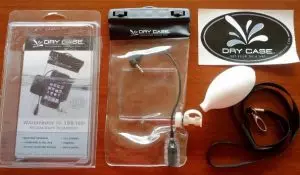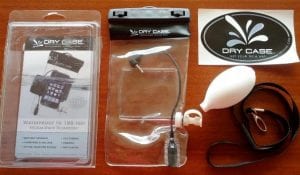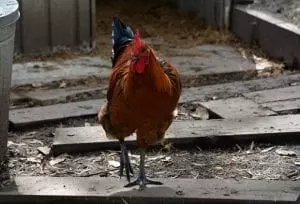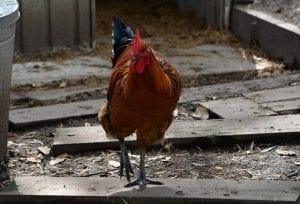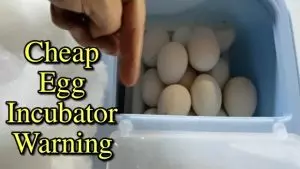When it comes to growing quail in the backyard environment one of the big advantages we have over a commercial operation is the lack of any market pressure to sustain a product all year round.
Therefore, we don’t need to worry too much when our quail go off the lay for a few months and that’s a really good thing because it’s actually natural for quail to stop laying over winter.
And, the reason quail don’t normally lay through the winter months is because the daylight hours are less during this time of the year. Quail need about 12 hours of daylight per day (some say 14 hours) and without more than this amount of daylight their laying mechanism shuts down.
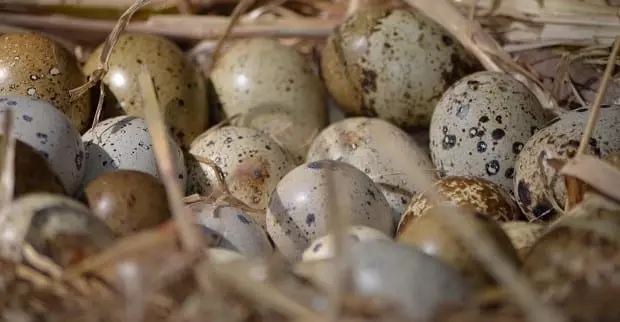
To go off the lay during the shorter daylight hours of the year is totally natural for a quail and is simply nature’s way of giving the female’s (hens) body a rest. For a small bird, a quail sure does lay a large egg and usually one every day! So, the laying process takes quite a bit of energy and therefore nutrients out of the body and it makes sense for the quail to have some time off during the year.
Also, the winter months aren’t the best time to raise chicks (naturally anyway) so the timing during winter being the shorter days of the year is perfect evolution.
However, commercial operations would rather the quail not have a break from laying so they keep their quail under lights for at least 17 hours or sometimes 24 hours a day to ensure the birds don’t go off the lay. Of course, this means a commercial quail operation can supply eggs all year round for either the quail egg market or meat market.
Whilst the savings and profits to make quail produce eggs all year are obvious the negatives are often overlooked. For a start, quail made to lay constantly without a rest will have a shorter lifespan and there’s a good argument to say the egg quality could be diminished in birds made to lay all year.
Personally, I just think the principal is cruel and although I can understand the reasoning from a commercial sense I’m glad I can offer my quail an environment where they can at least be happy and as natural as possible.
Quail egg collection
Normally through summer and spring a female coturnix quail will lay an egg every day, therefore, just like chickens you should collect their eggs daily also. If you are keeping the eggs for consumption then they can be collected and stored on the kitchen bench for several weeks or in the fridge for about 3 months.
If you are collecting the quail eggs for incubation then collect them over a 7 day period and store them in a cool place away from direct sunlight (like in a downstairs room). You may get away with collecting the eggs over a longer period but just be aware the viability/fertility of the eggs diminish over time so 7 days and no longer is a good timeframe in my opinion.
Regardless whether the collection of quail eggs is for consumption or incubation it’s best to vet the eggs and discard any that are dirty, cracked, unusual size/shape, or have been exposed to moisture.
If (like me) you keep quail in a pen rather than a cage you will have to hunt for the eggs. Quail will usually lay in a similar area but they don’t usually nest like a chicken does. Sometimes, you will get the odd quail hen nesting and collecting eggs – even sitting on them – but that’s the exception not the norm. Due to thousands of years of domestication, most Japanese quail have forgotten how to incubate their own eggs.
On rare occasions, if the temperature and conditions are just right, eggs which have been left in the pen might self-incubate and hatch out quail chicks. If this happens quail chicks face almost certain death without intervention and often hatch out under weight and under size.
Quail kept in stacked cages usually have a roll out egg system, which makes egg collection easier; having said that, it’s really not difficult to go for a walk around your quail pen and collect the eggs. For the sake of a few minutes of convenience, if you have the space a quail run is a much better and in my opinion more humane way to keep Japanese quail.
Large stand cages with straw or other litter on the floor are a good compromise for keeping quail and it’s not too hard to collect the eggs either. I once visited a breeder who had several large rectangle cages about 6 feet long and 3 feet wide with sugarcane mulch as litter. The cages were raised to waist height on a wooden sleeper frame. He divided his birds into breeders, holding stock for eating, and ones for sale. Being a small bird they seemed to have plenty of space in these cages and I thought his method of keeping quail was quite practical!
Oversupply of quail eggs
With backyard quail keeping it’s quite easy, depending on how many birds you keep, to get an oversupply of eggs. In my circumstances, I also keep chickens and ducks so we have an abundance of eggs and to be honest a chicken egg is a nice size so we tend to favour them over quail eggs.
Nevertheless, quail eggs do make great snacks and I find one of the best ways to use a whole heap is to boil them up, peel, and turn them into pickled eggs to be used in school lunches, party foods, or snacks in general.
Excess quail eggs can also be boiled and smashed up (shell and all) with a potato masher and then fed back to the quail or other poultry as a high protein, calcium rich feed. Hell, even just ask around your local community you’ll be surprised who would love to buy some fresh quail eggs – it’s a gourmet food after all.
Join us for a chat
I hope you enjoyed this article on Japanese coturnix quail egg management tips for the backyard quail keeper.
Jenni, one of the members on our forum at Self Sufficient Culture started a thread called: Quail eggs, now what? In this thread, you can find some more information and answers to some quail egg management questions – feel free to join up and ask your own questions or add to the discussions. Likewise, you can make a comment or ask a question below.
Mark Valencia – Editor SSM
Look, and see the Earth through her eyes…



